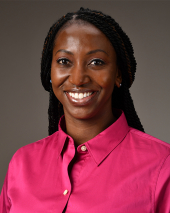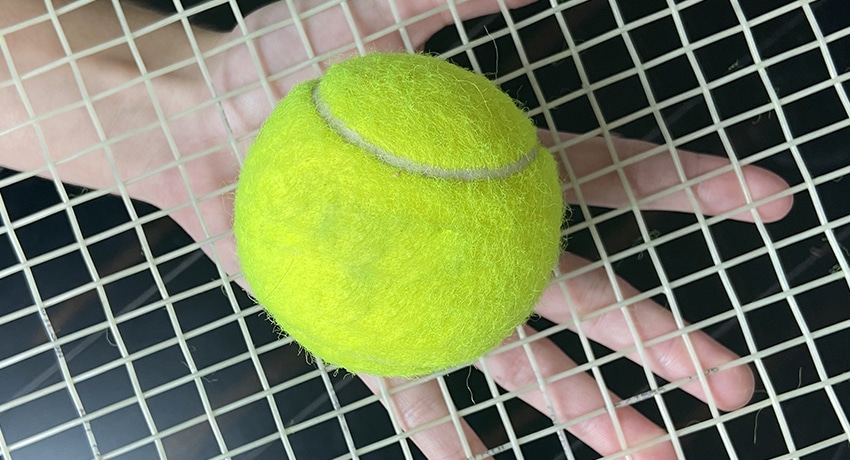Seventeen-year-old Hannah* of Katy, Texas, began to suffer from chronic lower back pain when she was just 13 years old.
Hannah tolerated the pain, but it would become so debilitating she would often miss school.
“In her eighth-grade year, she had so many absences, and this is a kid who loves school,” said mother Cindy*.
Hannah and her family believed she had a sports injury, so in August 2019, Cindy took Hannah to see a sports orthopedist.
“We really believed she had a volleyball injury because the pain started at a time when she had just finished volleyball camp,” Cindy said.
The orthopedist put Hannah in a back brace for several weeks, believing it could be a stress fracture in her spine. However, it did nothing to relieve her back pain. The mother and daughter even sought a second opinion.
“The first doctor, he took me seriously for about a year. Then he told me the pain was because I wasn’t doing physical therapy,” Hannah said. “The other doctor told me the pain was all in my head.”

Cindy and Hannah then decided to see Angie Curtis, MD, pediatric sports medicine physician with UT Physicians and staff physician in the Department of Orthopedic Surgery at McGovern Medical School at UTHealth Houston.
“When we saw Dr. Curtis, she was so compassionate, and she actually believed us,” Cindy said. “The others thought Hannah wanted to create drama, but that’s not my kid.”
Curtis immediately knew Hannah’s case was unusual.
“By the time I met Hannah, she had normal X-rays and normal MRI reports, had tried a back brace, and had completed a physical therapy course,” Curtis said. “While all musculoskeletal pain is not always picked up on imaging, usually it will respond to the treatment she tried in addition to rest from the activity. But none of these interventions helped Hannah.”
Curtis was certain Hannah’s symptoms had to stem from another system in the body.
“At the initial visit, I was not quite sure which part of the body, but I told them I did not feel it was orthopedic,” Curtis said. “I did, however, vow to help them figure it out and validate their concerns. She had to quit her sport due to the pain. It was affecting her quality of life.”
A few months after the visit, Hannah called her mother at work.
“I immediately knew something was wrong,” Cindy said. “She called me at work, which is something she never does. She said, ‘I can’t do another day like today.’”
Cindy immediately took Hannah to see Curtis for prescription medication.
“While I was there, I told Dr. Curtis, ‘Please help us,‘” Cindy said.
On the second visit, Curtis approached the case from a primary care line of questioning instead of a sports medicine approach.
“As a primary care sports medicine physician, it’s important to never forget your primary training,” Curtis said. “If something isn’t making sense in the orthopedic realm, you have to consider all possibilities, not just what pertains to bones and muscles. Further questioning revealed an association with her menstrual cycle.”
Curtis consulted with a gynecologist, asking if she had seen any cases of teen girls with back pain refractory to traditional anti-inflammatories. The gynecologist told Curtis: “absolutely.”
The colleague recommended a medication for Curtis to prescribe until Hannah could see a gynecologist. It was the start of some relief for Hannah.
“Dr. Curtis called me that same evening and left a voicemail,” Cindy said. “Dr. Curtis and the gynecologist believed she had endometriosis.”
Endometriosis is a condition where endometrial-like tissue grows outside the uterus. It causes an inflammatory reaction that causes extreme pain during menstruation. One in 10 females suffer from it and do not realize it.
Sometimes pain from endometriosis causes back pain because the abnormal tissue can implant around the nerves, Curtis further explained.
For the first time in several months, Cindy and Hannah finally had hope.
“I never thought the pain and my menstrual cycle were related, but it matched up,” Hannah said. “I started feeling the pain right after volleyball camp, which is when my cycle started.”
A gynecologist confirmed Hannah’s condition and started treating her with hormone therapy.
“They put her on hormones, and oh my God, she got her life back. It really helped with the pain,” Cindy said. “We’re still in the experimental stage. They’re still fine-tuning her hormone therapy, but we finally have hope and healing.”
The therapy has allowed Hannah to play sports again.
“The endometriosis was the reason I didn’t play volleyball in eighth grade, but by the time I got to high school I was able to play again,” Hannah said. “I ended up doing tennis, and I got more involved with other things.”
Unfortunately, too many females suffer from endometriosis and do not realize it.
“Endometriosis is often misdiagnosed for other things,” Curtis said. “Unfortunately, it is a diagnosis that is commonly delayed or missed altogether since the abnormal tissue can affect various organs in the abdomen and masquerade as other problems.”
Even though she also experienced prolonged bleeding during her cycles, Hannah never thought something could be wrong in a gynecological sense.
“I thought everything was normal and everything would just settle out,” Hannah said. “That’s why I never told my mother anything.”
Until there is more awareness of endometriosis, it is important for females to not just “live with the pain.”
“Don’t give up. Don’t stop searching for the right doctor. Don’t stop advocating,” Cindy said. “There were times we felt like giving up, but knew we had to keep trying so Hannah could live a quality life.”
Hannah will always be grateful to Curtis for believing her and helping figure out the problem.
“Don’t let anyone tell you your pain isn’t real,” Hannah said. “It’s very bad, and it’s very real.”
For Endometriosis Awareness Month in March, educate a female friend or family member on this condition and read “The Pain of Endometriosis” article, where Asha B. Bhalwal, MD, OB-GYN with UT Physicians, shares more information.
*Name has been changed for privacy.



